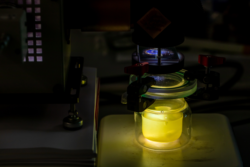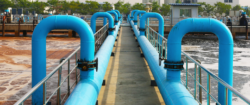Flocculation in Wastewater Treatment: A Comprehensive Examination
Introduction
Wastewater treatment is a critical process that ensures the safety and sustainability of our water resources. As urbanization continues to escalate, so does the volume and complexity of wastewater generated. According to the World Health Organization, over 80% of the world’s wastewater is released into ecosystems without adequate treatment, posing severe health and environmental risks. As such, advanced treatment methods like flocculation have emerged as essential components in the wastewater treatment hierarchy.
This article delves into flocculation: a fundamental process that differentiates effective wastewater treatment facilities from their less efficient counterparts. We will explore the mechanisms, types of flocculation, its role in removing contaminants, and practical applications, all backed by research and data pertinent to facility managers and wastewater treatment professionals.
1. Understanding Flocculation: The Science Behind the Process
1.1 What is Flocculation?
Flocculation is the process of agglomerating fine solid particles into larger aggregates, known as "flocs." This process primarily occurs after the coagulation stage in wastewater treatment, where chemical coagulants (such as alum or ferric chloride) destabilize colloidal particles, allowing them to clump together.
1.2 Mechanisms of Floc Formation
Flocculation is driven by various forces, including:
- Brownian Motion: Small particles collide and stick together due to random motion.
- Electrostatic attraction: Closer proximity increases the likelihood of particle fusion.
- Hydrophobic interactions: Non-polar molecules can adhere to one another, fostering floc growth.
Understanding these mechanisms helps optimize flocculation processes for maximum efficiency. Research published in the Journal of Water Process Engineering shows that optimizing the mixing energy during flocculation can increase floc size by up to 25%, resulting in enhanced sedimentation rates and better overall treatment performance.
1.3 Different Types of Flocculation
Flocculation can generally be categorized as follows:
- Induced Flocculation: Initiated by adding flocculants (polymers) to enhance coagulation effectiveness.
- Natural Flocculation: Occurs due to natural biochemical processes (e.g., microbial activity).
Understanding the type of flocculation applicable to a given wastewater treatment scenario can inform operators on the suitable selection of chemicals and equipment.
2. Role of Flocculation in Wastewater Treatment
2.1 Removal of Suspended Solids
Flocculation plays a pivotal role in aggregating and removing suspended solids, which are normally difficult to eliminate. According to the U.S. Environmental Protection Agency (EPA), efficient flocculation can lead to a 95% reduction of suspended solids in treated effluent.
2.2 Removing Harmful Contaminants
Flocculation not only enhances physical removal but can also facilitate the removal of several harmful contaminants, including:
- Heavy Metals: Research indicates that flocculation can reduce heavy metal concentrations by over 85% when combined with adequate coagulants.
- Organic Pollutants: VOCs (volatile organic compounds) and pathogens can be effectively removed through enhanced floc formation.
2.3 Improving Settling and Filtration
For effective separation and filtration, the physical size, density, and strength of flocs are critical. Larger and heavier flocs settle faster, allowing for cleaner effluent. A study in the Water Environment Research Journal demonstrated that optimizing floc size led to a reduction in retention time in secondary clarifiers by up to 40%.
3. Implementing Flocculation: Practical Considerations
3.1 Selecting Appropriate Flocculants
The selection of appropriate flocculants is crucial for ensuring effective results. Common chemical flocculants include:
- Aluminum Sulfate (Alum): A widely used coagulant that can enhance floc formation and is effective across a variety of wastewater types.
- Polymeric Flocculants: These synthetic flocculants are often more effective but can be cost-prohibitive.
According to recent industry studies, finding the right balance between cost and efficiency can save wastewater treatment plants significant operational expenses over time.
3.2 Process Optimization
Optimizing the flocculation process requires precise control of several variables:
- Mixing Intensity: High-shear mixing can break down flocs, while gentle mixing promotes floc formation.
- Retention Time: Longer retention times in flocculation tanks promote growth but also occupy valuable space.
Using computational fluid dynamics (CFD) models can help engineers simulate and optimize these variables, improving overall efficiency.
3.3 Monitoring and Control
Real-time monitoring of key parameters—such as turbidity, pH, and chemical dosages—can transform flocculation into a data-driven process. Facilities leveraging advanced monitoring technologies report improvements in treatment reliability and reductions in chemical usage by as much as 30%, according to published case studies.
4. Challenges and Solutions in Flocculation
4.1 Common Challenges
Despite its advantages, flocculation can present several challenges for wastewater treatment facilities:
- Floc Stability: Poorly engineered flocs can break apart in subsequent processes, leading to inefficiencies.
- Chemical Costs: The expense associated with flocculants can deter facilities from optimal treatment practices.
4.2 Potential Solutions
Addressing these challenges involves:
- Research and Development: Investing in R&D for alternative, cheaper flocculants can result in cost savings.
- Continual Training: Ensuring staff are knowledgeable about the latest techniques and technologies helps maintain high operation standards.
Recent research has also indicated that the integration of biological flocculants, such as those derived from microbial biofilms, can provide a cost-effective, sustainable alternative to chemical treatments.
5. The Future of Flocculation in Wastewater Treatment
5.1 Technological Advances
Innovations in flocculation technologies show promising potential. For example, the development of automated flocculation monitors can enable real-time adjustments leading to more reliable treatment outcomes. Facilities using such advanced systems have reported a 50% improvement in effluent quality.
5.2 Policy and Regulatory Trends
Given the ongoing global focus on water conservation and pollution reduction, regulatory bodies are emphasizing the significance of effective wastewater treatment. Facility managers should stay informed about future regulations that may affect flocculation processes and treatment efficacy.
5.3 Holistic Treatment Approaches
Adopting integrated treatment approaches, combining flocculation with other processes such as biological treatment and advanced oxidation, can lead to enhanced treatment outcomes. Recent reviews published in environmental science journals highlight the effectiveness of synergistic approaches in achieving compliance with increasingly stringent discharge standards.
Conclusion
Flocculation represents a cornerstone technology in modern wastewater treatment, responsible for enhancing the removal of contaminants, minimizing environmental impacts, and improving the overall efficiency of treatment facilities. Understanding the principles underlying flocculation and addressing the challenges associated with it are critical for sustainable water management.
As we look to the future, advancements in technology, regulatory frameworks, and holistic treatment approaches will shape the operational landscape of flocculation in wastewater treatment. By staying updated on these changes and implementing best practices, wastewater treatment professionals can ensure their facilities successfully navigate the complexities of treatment while safeguarding public health and the environment.
In summary, embracing flocculation is not merely a technical choice but a pivotal strategy for sustainable resource management in an increasingly demand-driven world.
By addressing the key areas of flocculation with detailed analysis and relevant data, this article is structured to enhance understanding, guide best practices, and support decision-making for wastewater treatment professionals. To ensure further engagement and discussion, a forum can be created for readers to share their experiences, challenges, and solutions regarding flocculation in wastewater treatment processes.
source https://www.waterandwastewater.com/flocculation-in-wastewater-treatment/




No comments:
Post a Comment